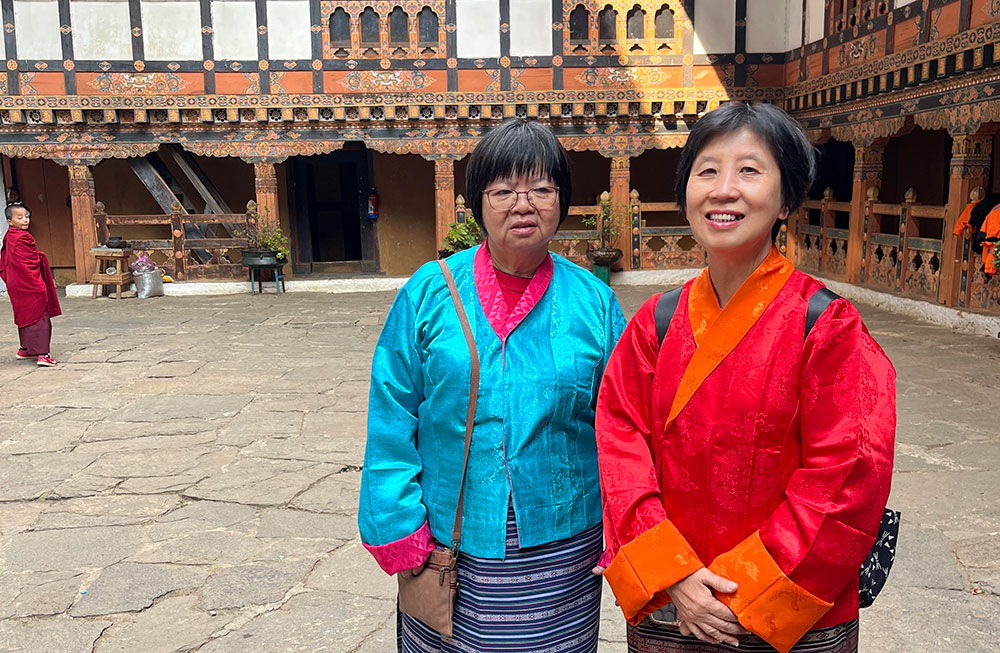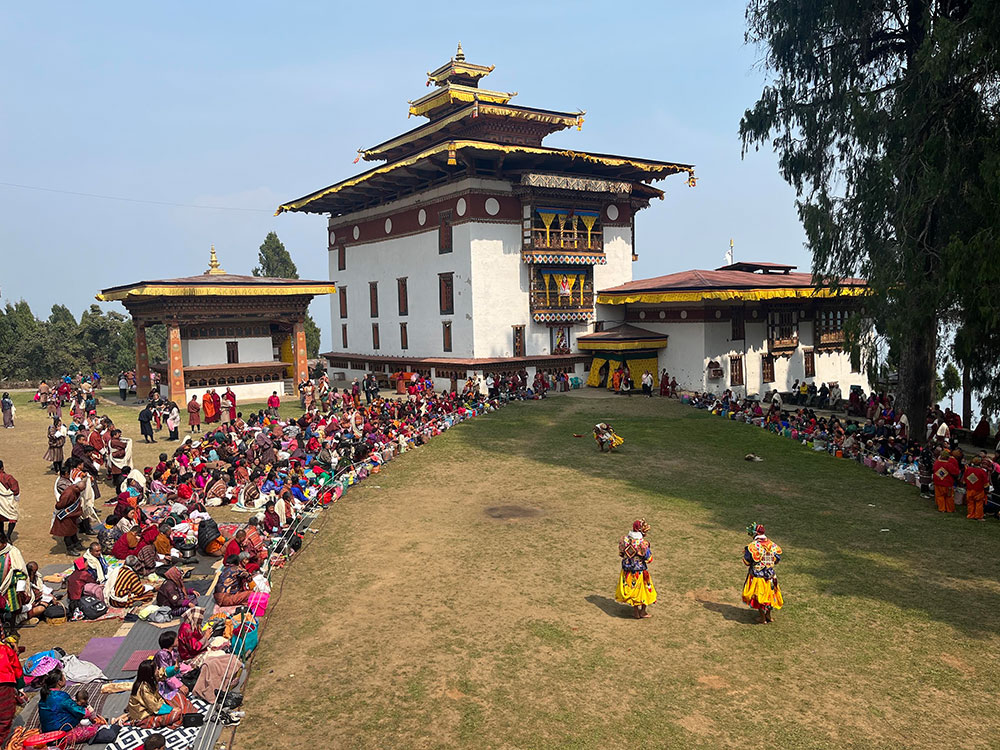Chencho Dema
Punakha—On March 19, during the third day of the Talo Tshechu in Punakha, there was a lively atmosphere filled with excitement. Many people, including locals and visitors, came together to celebrate.
The people of Talo celebrated the 213th Tshechu, which started on March 17th, continuing a long-held tradition with cultural importance for another year.
Talo, known as the home of the mind incarnations of the Zhabdrung, was bustling with activity. Notably, the scene was filled not only with locals from Talo but also with hundreds of tourists who had come to see the celebrations.
The number of tourists who came exceeded the attendance seen at the Punakha Tshechu in February, making the event even more spectacular.
Talo Tshechu is one of the top yearly festivals in the Punakha.
Every year, for three days, people from all over the valley come to the 250-year-old monastery, looking for spiritual blessings and to admire the traditional sacred mask dances.
Since its beginning in 1703, the Tshechu has been performed in the same way every year, following the same traditions and rituals.
Unlike last year, this year witnessed a significant rise in the number of tourists, especially international visitors. While the exact reasons for this increase vary, locals have different ideas about what might have caused it.

khaw Chiw Hong (red) and Wong Paik Kim (blue) from Malaysia
Although the exact count remains unknown, based on information from a local source, the increase could potentially exceed several hundred visitors.
A 58-year-old tourist named Khaw Chiw Hong from Malaysia is now in Bhutan for five days. She said she wanted to visit Bhutan because her friend had been there four times and told her about it.
“My friend talked to me about Bhutan’s exciting festivals and how special the country is. I got really excited and quickly planned this trip with my friends. Being at the Tshechu festival for the first time has been amazing, and I’m really happy I came on this journey,” she said happily.
Wong Paik Kim, a 60-year-old visitor from Malaysia, shared her joy at finally achieving her dream of visiting Bhutan. Even though she encountered difficulties along the way, she expressed her excitement about beginning this adventure. “The lively festivals of Bhutan have always fascinated me, and witnessing the true essence of the Talo Tshechu has left me speechless,” she said, unable to fully express her gratitude.
A couple from Manchester, the UK, shared their desire to explore the exceptional beauty of Bhutan’s countryside. They were fascinated by the stories their friends shared about Bhutan and decided to visit Talo after learning about the festival.
Namgay Wangchuk, a tour guide, mentioned that the Talo Tshechu festival is highly regarded among the festivals recommended by travel agents to tourists. He observed that this festival is frequently emphasized as a must-see attraction, which explains the increasing number of tourists attending the event.
Talo Tshechu is famous for its captivating mask and Atsara dances. Another cherished highlight, with deep religious and historical significance, is the Zhungdra performed by the Talo dance troupe. This classical dance form is unique to the village and its surroundings. Called Mani Soom, this song-dance genre is known for its slow pace, gentle swaying movements, and almost meditative nature.
The Talo Tshechu takes place in the grounds near Talo Sangnacholing, situated on a picturesque plateau offering breathtaking views of the surrounding villages. Settled at an altitude of 2800 meters.


